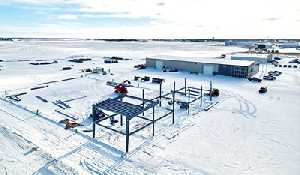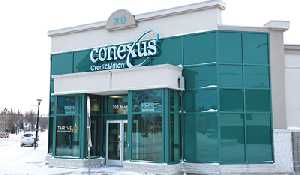Heppner responds to Toronto Star story on H2S
October 3, 2017, 8:21 am


The following statement was released today by Energy & Resources Minister Nancy Heppner:
A recent story by the Toronto Star, National Observer, and Global News on the Government of Saskatchewan’s environmental oversight of the oil industry has raised concerns from members of the public. I want to take a moment to highlight some important facts that were discounted or omitted from the story.
The Government has taken a number of measures to strengthen its oversight of sour gas management within the oil and gas industry. These include:
- Increased inspections of wells and facilities that process high volumes of sour gas (in the summer of 2015 the Ministry of the Economy conducted 4,251 site inspections in southeast Saskatchewan and 12 compliance notices were issued. None involved high risk releases of sour gas.)
- Collection of gas composition data to better identify those wells and pools that have a high-percentage of sour gas production;
- A new reporting category for sour gas emissions was added as part of its incident reporting which was fully operational at the beginning of June.
- More field inspectors in the Estevan area to strengthen inspection and enforcement activities;
- The acquisition of highly-sensitive hand-held sour gas measurement devices that allow field inspectors to quickly identify the source of sour gas odors;
- The deployment of Forward Looking Infrared (FLIR) cameras to identify gas leaks and venting at wells and facilities;
- Field testing of truck-mounted mobile gas detection equipment that allows for sweeps of large areas to identify potential sources of sour gas emissions; and
- New air monitoring stations.
In addition, a new Field Services Branch was created to strengthen on-the-ground inspection and enforcement activities with additional resources shifted to field operations in southeast Saskatchewan to support sour gas management.
Two years ago, the Ministry launched an Integrated Resource Information System (IRIS) that provides tools for managing inspection and incident reporting. IRIS has substantially improved the Ministry’s ability to track and analyze incident and inspection data including those tied to sour gas.
In 2014, the government introduced a new cost-recovery levy tied to oil and gas wells which is being used to fund increased regulatory programming, including the purchase of new equipment, the hiring of additional field staff, the development new data systems, and increased technical training.
In 2017, the levy was expanded to pipelines, which will assist in supporting new programs to better manage pipelines used to gather sour gas.
Altogether, funding for regulatory programs has increased by $4.5 million since the levy was introduced in 2014, including an additional $1.35 million in 2017-18.
There has been a marked improvement in air quality in southeast Saskatchewan in terms of sour gas levels. Air quality measurements consistently show that air quality standards are being met. The inspection activities by the Ministry confirm the sour gas management practices of industry operators have improved.
It should be stressed that protecting the health and safety of Saskatchewan citizens is the number one priority for the Government of Saskatchewan, and we take this responsibility very seriously.



































